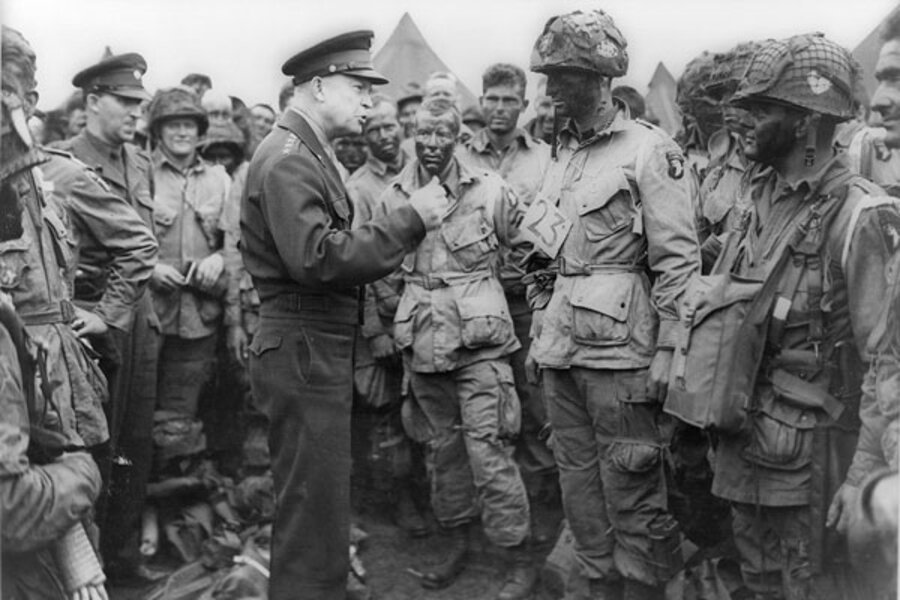The day before D-Day, Dwight Eisenhower wrote this famous message
| Washington
For US Gen. Dwight D. Eisenhower – for the thousands of American troops bound for the Normandy invasion – June 5, 1944, was a day of waiting for their lives to change forever.
The landings on the coast of France should already have been underway. June 5 was General Eisenhower’s original D-Day. But the weather from England over the Channel to target beaches was bad and deteriorating.
“The weather in this country is practically unpredictable. For some days our experts have been meeting almost hourly and I have been holding Commander-in-Chief meetings once or twice a day to consider the reports and tentative predictions,” reads a secret Eisenhower memo dated June 3.
At a crucial meeting on the evening of June 4, Eisenhower’s weather team told him they believed the weather would improve just enough so the invasion could proceed in the next few days. Eisenhower decided to push back D-Day by one day and go ahead with the invasion on June 6.
That’s how “June 6” became US historical shorthand, a date that needs little explanation, like “September 11.”
Crucially, the Allied domination of the air made it easier for the US to gather meteorological information. The Germans were not as well informed. Their experts predicted continued storms. Field Marshal Erwin Rommel, commander of the German Army group defending along the coast where the Allies planned to land, went back to Germany for his wife’s birthday.
In England, Allied junior officers began opening their sealed orders. Troop convoys began leaving the southern English ports. In the morning, Eisenhower watched troops embarking at Portsmouth. In the evening he visited the 101st US Airborne Division near Newbury. They were already prepared to leave for France.
The photos from that visit are iconic. Many of the men have already blackened their faces and donned camouflaged helmets. Eisenhower in contrast is immaculate and seems intent upon communicating something of importance with the unit.
On June 5, Eisenhower also wrote one of the most famous undelivered notes of US history. It’s known today as the “In Case of Failure Message.”
“Our landings in the Cherbourg-Havre area have failed to gain a satisfactory foothold and I have withdrawn the troops,” it began.
“My decision to attack at this time and place was based upon the best information available. The troops, the air, and the navy did all that bravery and devotion to duty could do. If any blame or fault attaches to the attempt, it is mine alone,” wrote the Allied commander in chief.
Eisenhower was quartered at Southwick House, a Georgian mansion just north of Portsmouth. The large wall maps used to plan the D-Day invasion in the house are still in place. Today the ships and troops on the map reflect where units were located at the time the attack began.
In the Channel, Monitor correspondent Richard Strout was on the heavy cruiser USS Quincy. On June 5 the warship was making way toward France.
At 7 p.m., a message from task force headquarters is read over the Quincy’s public address system. It urges the men to “put the Navy ball over for a touchdown.”
The chaplain offers a prayer. All over the ship men bare their heads and bow.
“10:30 p.m.: The boatswain just piped, ‘All hands, man you battle stations,’ ” Strout wrote when remembering the day in 1984.
“The bugle blows, ‘General quarters.’ It has begun.”






